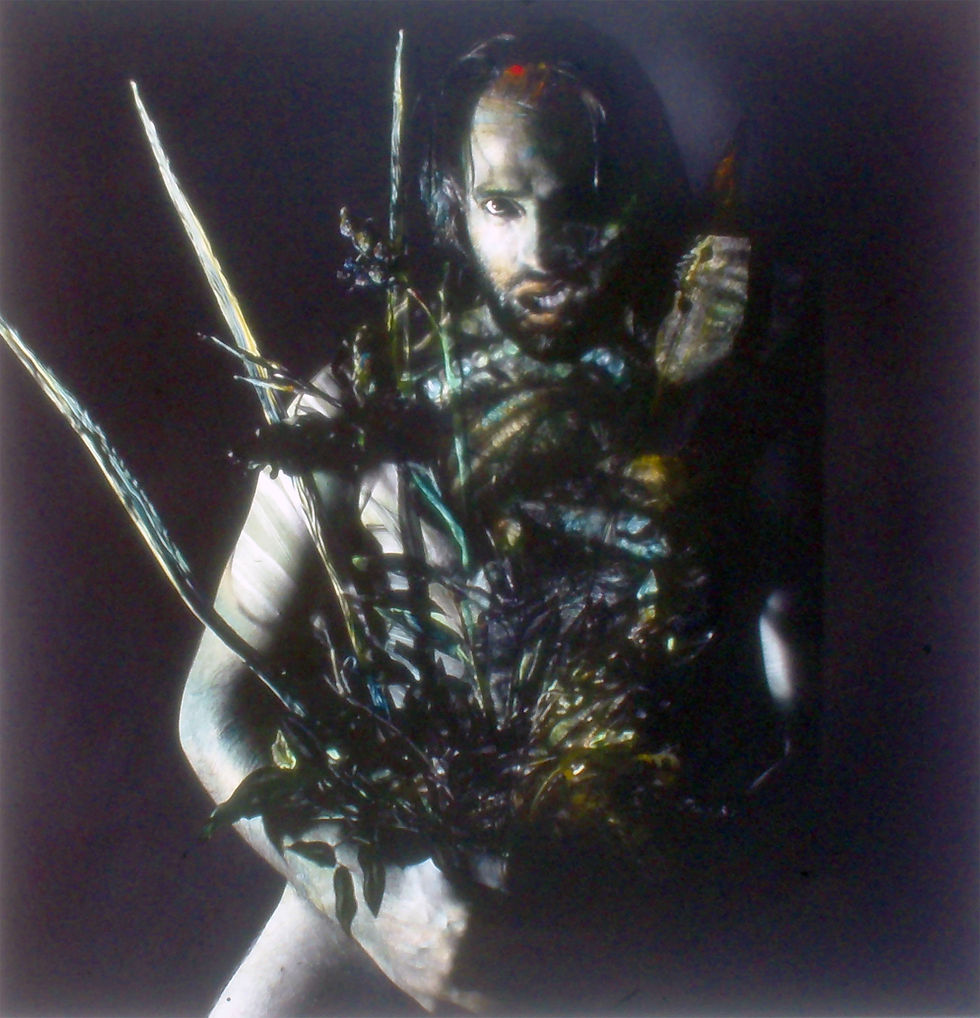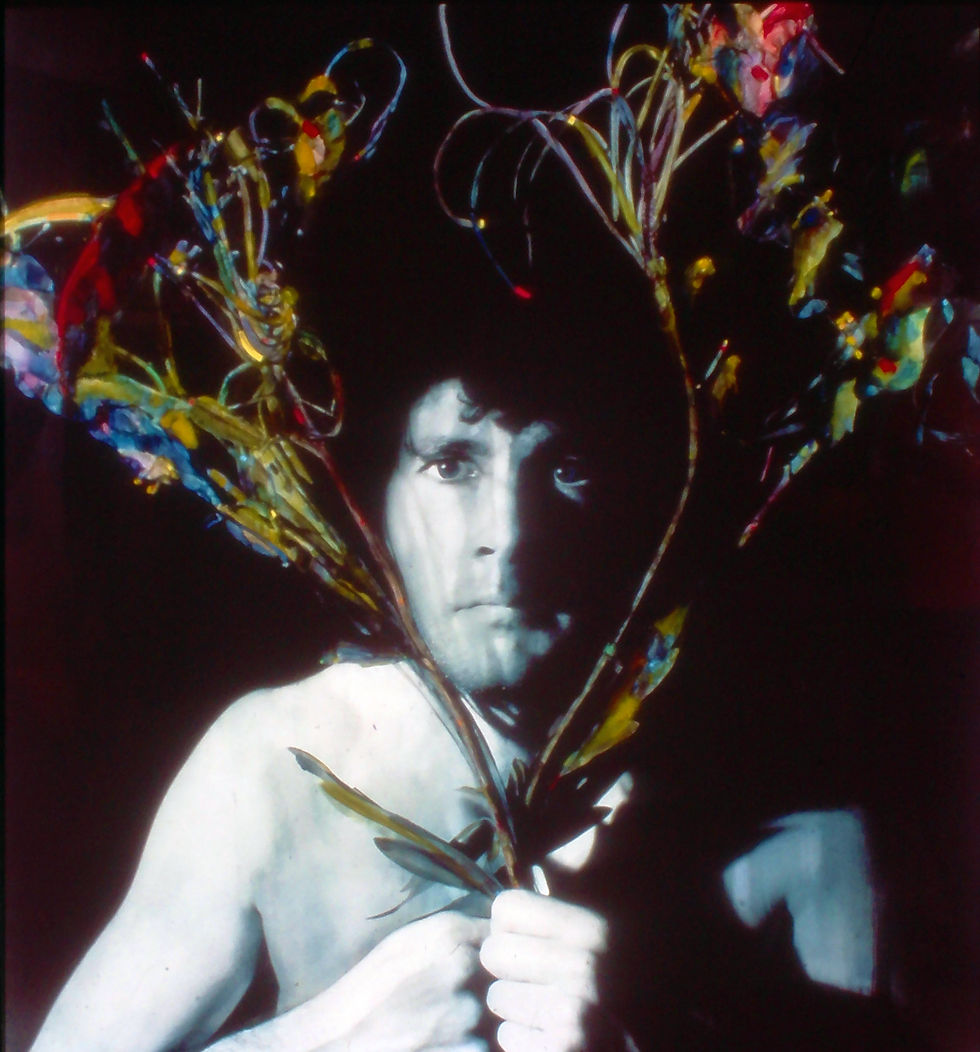William E. Parker
Green Man Series: 1993-1995

Hand-colored black and white silver print, app. 30" x 30."

Hand-colored black and white silver print, app. 30" x 30."

Hand-colored black and white silver print, app. 48" x 48."

Hand-colored black and white silver print, app. 30" x 30."
(Double click on the image to view the gallery without interference of arrows and captions)
In his evolving restorative project, Parker’s Green Man images swerve from the bestial identity of his folkloric wild men in Der Wilde Mann, with their Sasquatchian shagginess and ferocity, to a vegetal being, one associated with earth’s abundance. Long assuming the green man figure signals a variation on the wild man as “man of the woods,” I was surprised to discover that the mythological and folkloric origins of this figure remain uncertain and still debated. Jo Livingstone’s 2016 overview of this debate in “The Remarkable Persistence of the Green Man,” though perhaps overly dismissive of early scholarship, provides useful context. For Bill Parker, the green man embodies earth consciousness with global implications. As an aside, Parker once cited as one of his analogs the fanciful portrait heads by Arcimboldo (1527–1593) composed entirely of vegetables, flowers, nuts, animals, and even breads and books. These he had in mind when he created the bouquets his green men offer us. Like the images in his three preceding series, the green man images are, by virtue of Parker’s overpainting, one-of-a-kind black and white silver prints, some grand scale like the final image shown here. Four works from Parker’s Green Man series appeared in the DeCordova Museum’s exhibition, Terrors and Wonders: Monsters in Contemporary Art (September 15, 2001–January 6, 2002). (For an overview of this exhibit, see Cate McQuaid’s Boston Globe article, “Things that Go Bump in the DeCordova,” September 30, 2001.)
Parker’s comments on these works in the Terrors exhibition catalog, elucidate the series as a whole. My recent hand-colored photographs stem from research focused on the counterpart of “Mother Nature,” the archetypal Green Man, an anthropomorphized representation of earthly matter and vegetational fertility, most apparent in the art, literature, mythologies, and rituals of Egypto-Roman, Medieval, and Renaissance times. Considering it urgent for men of current patriarchal cultures to oppose rampant ecological carelessness and environmental devastation, my four serial images of a male figure clutching plant life symbolically configure, through physiognomical expression, possible states of masculine reaction today to being identified with . . . nature, so often solely associated with matriarchy and the feminine. Initially portrayed is an expression of grotesque contemptuousness, followed by visages of uncertainty and awe, and then, the final image of the male—[his] forehead . . . emblazoned with the projection of an exquisite leaf captured photographically by the nineteenth-century French [photographer] Charles Aubrey (1811–1877)—appearing as a serenely assured and protecting representative of the green world of our endangered planet. (“William E. Parker,” Terrors and Wonders: Monsters in Contemporary Art. Exhibition catalog. [Lincoln, MA: DeCordova Museum and Sculpture Park, 2001], p. 29) From a daughter’s perspective, the Green Man series is particularly moving because I find in it a visual resolution of my father’s personal journey through uncertainty, emotional extremes, and a logos-driven identity that was, ultimately, unsatisfyingly incomplete to him. Such longings! Many of the images in this series—I regret I was unable to locate more than five slides—evince a centeredness that links them to his painted Saskia portraits of the 1960s—and a generous, tender abundance that formed the core of his nature.
—Catherine-Nevil Parker